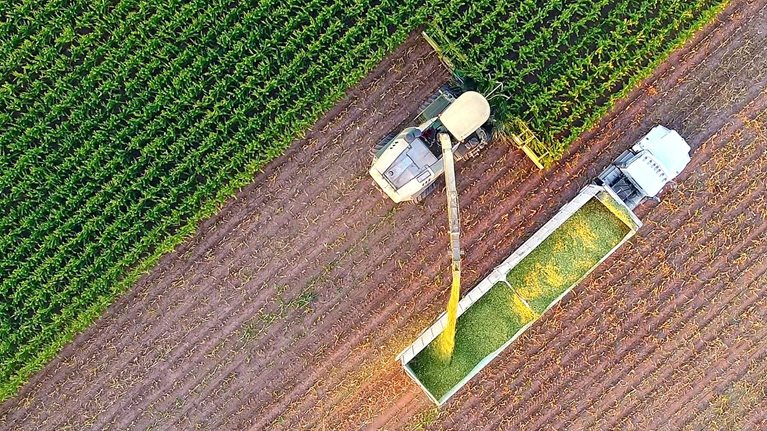After frenetic activity during the pandemic and a decline postpandemic, M&A in transportation and logistics enters a new world in 2024. But major forces are transforming the industry and creating five priorities for M&A investment.
The pandemic highlighted the strategic importance of supply chain execution. Many transportation and logistics players looked to M&A to keep things moving and profited handsomely. In 2023, deal activity slowed to a crawl, but 2024 promises new opportunities, as leading investors have amassed funds that they are ready to spend. But the M&A environment is changing, as financial, market, and technology forces are transforming the industry. Would-be dealmakers should prepare for this new world now.

Explore the full collection of articles from our Top M&A trends in 2024 report >
COVID accelerated supply-chain-focused deal activity
During the pandemic, when supply chain execution emerged as a critical strategic capability, the transportation and logistics industry experienced unprecedented M&A activity. Many logistics players and financial investors did deals to expand capabilities and acquire high-performing assets. Deal value soared from $51 billion in 2020 to more than $150 billion in 2021 before dipping to $95 billion in 2022.
Logistics players saw unprecedented profitability. Shipping rates reached record levels across all modes of transportation—sometimes more than ten times pre-COVID levels. The rising bottom line encouraged both strategic investors (flush with cash generated by high demand and high rates) and financial investors (enjoying easy access to capital) to pursue their acquisition ambitions. For many logistics providers, these ambitions included expanding their value propositions to serve the supply chain end to end or their geographic coverage, such as CMA CGM acquisitions in freight forwarding and Maersk acquisitions in the North America domestic market.
Logistics providers with well-honed capabilities in deal execution and integration—and enough of those capabilities to do multiple deals—fared especially well. Consider global logistics giants DSV and Kuehne+Nagel (K+N). DSV acquired Panalpina in 2019 and Agility in 2021; DSV’s stock price has almost doubled since early 2020. K+N acquired Rotra Forwarding in 2020 and Apex in 2021; K+N has enjoyed TSR of 180 percent since early 2020.
Deal activity slowed in 2023
After two frenetic years, both deal volume and value fell sharply in 2023 (Exhibit 1). Transportation services remained the most active sector, followed by shipping and general logistics or warehousing. North Asia saw the highest number of deals, followed by Europe and North America (Exhibit 2).


The average size of the top 25 deals also dropped—almost 26 percent (Exhibit 3). Only 11 deals crossed the $1 billion threshold, compared with 20 deals in 2022.
Nevertheless, shipping and logistics giant CMA CGM has been quite active in dealmaking for the past several years, including 2023, fueling its growth as a top player in global logistics. CMA CGM has expanded its worldwide presence and strengthened its ability to provide end-to-end transportation and supply chain services.

Overall, we take these shifts as signs of a course correction, fueled by several factors:
- Would-be buyers and sellers have had difficulty agreeing on prices because they see the M&A landscape very differently. Buyers believe that demand and prices will return to prepandemic levels, while sellers believe that prices will remain above prepandemic levels and that some COVID-generated profitability will sustain dealmaking going forward.
- Access to capital has tightened as central banks have raised interest rates to fight inflation, reducing the ability and appetite of buyers, especially financial buyers, to look for deals.
- Demand for logistics services has weakened, exerting downward pressure on the rates that shippers pay for those services.
Together, these factors created a perfect storm for logistics M&A in 2023. But 2024 promises to be a very different year. In fact, we are already seeing meaningful activity with CMA CGM’s January announcement of plans to acquire Wincanton, a UK-based logistics company, for about $1 billion.
2024 opens a new world of opportunity
The 2023 shifts do not preclude unlocking substantial value from logistics M&A in 2024 and beyond. Leading strategic and financial investors are sitting on substantial funds that they are ready to spend once the market picture clears, multiples revert to historic levels, and perspectives on how best to create value sharpen. But today, valuations remain high, in line with economic conditions and optimistic forecasts.
However, dealmaking in 2024 and beyond must take into account major forces that are transforming transportation and logistics:
-
Financial forces. This year looks attractive for buyers. From 2020 to 2022, logistics players accumulated deep cash reserves that they had to tap in 2023. Now they face a new financial reality that is exacerbated by the rising cost of money. Many logistics companies will have difficulty securing financing.
Many would-be sellers will also find limited demand for their assets. We do not expect demand to rebound to pandemic levels. Demand stabilizing at 2023 levels will push valuations down and force less competitive players to rethink their business plans.
-
Market forces. The transportation and logistics sector is growing more complex and more competitive, and we expect these trends to continue. Only the financially fittest will survive.
Shipper demands for more services and greater visibility into those services are pushing logistics players to invest in broader, more diversified service portfolios, vertically integrated services, and intermodal solutions. Meeting these requirements translates into more complex supply chain designs, with greater speed, broader geographic coverage, and more cost-competitive offerings. Emerging expectations for sustainable operations will only complicate the picture.
While feeling mounting pressure to deliver more, logistics players must often do so with less. Churn, especially among truck drivers, is a severe problem that has serious implications for operating and recruiting costs, not to mention service quality.
-
Technology forces. Leading-edge supply chain designs will take full advantage of sophisticated digital capabilities and automation in sales and operations—from building online channels to conducting deep analyses of the supply chain network to identifying commercial opportunities. Artificial intelligence, from analytics to electric vehicles to warehouse robots, will play a key role here.
The increasing importance of technology favors the leading strategic and financial investors in 2024 and beyond because they have the financial power to secure the digital capabilities and, with them, daunting competitive advantage. Companies that cannot keep pace should consider inviting acquisition to gain access to the capabilities they cannot otherwise afford.
Five priorities for M&A investment
These forces suggest five priorities for M&A investment across segments of transportation and logistics (Exhibit 4):

- Pursue acquisition targets created by the 2023 downturn opportunistically. Many midsized companies in various segments fit the bill. Forecasts that prove overly optimistic should translate into lower valuations.
- Pursue acquisition targets that can expand the portfolio of services and enrich the value proposition. These will often be viable businesses located in market segments that other companies are ignoring or businesses with assets that would be difficult to replicate.
- Invest in sustainability infrastructure that will make the supply chain greener, pleasing both shippers and the government. Opportunities here range widely, from cleaner fuels to electric vehicles to circularity.
- Acquire and integrate providers in fragmented segments to create champions. The top ten providers in a segment like contract logistics represent only about 5 percent of the market, so investors, especially leading financial investors, stand to profit handsomely from buying several companies at attractive prices and rolling them up into a single company that enjoys broader geographic reach and a larger customer base.
- Acquire technologies that are transforming logistics operations, particularly digital and automation capabilities. Appropriate targets will be companies that have or are developing these capabilities.
To profit from pursuing these priorities, investors will focus on assets that enable their new owners to build stronger companies and tap new sources of value.
Getting ready for 2024 and beyond
Would-be dealmakers should lay the groundwork now. Specifically, they should:
- Set a vision for M&A investment. For most strategic investors, this vision should focus on strengthening competitive advantage or capabilities. For most financial investors, this vision should focus on capturing financial value from every deal. Then the question is: Which segments and potential targets in those segments offer the greatest opportunity to realize that vision?
- Develop a value creation plan. This plan should address executing the deal and, especially for strategic investors, integrating the acquired company and transforming the business. The plan should provide a specific answer to the question: How will this deal create value for me?
- Ensure that the capabilities required to implement the value creation plan are robust. Questions to answer include: Do I have the capabilities required for execution, integration, and transformation? Do I have enough of those capabilities to do more than one deal efficiently and effectively? Are the capabilities rollout-ready when the right time comes?
After several tumultuous years for M&A investment in the transportation and logistics industry, powerful forces are transforming the industry and shaping five new investment priorities for 2024 and beyond. Capitalizing on those priorities requires immediate actions: setting the right investment vision, developing a clear plan for capturing value, and creating or enhancing robust capabilities to translate that plan into operating reality.











